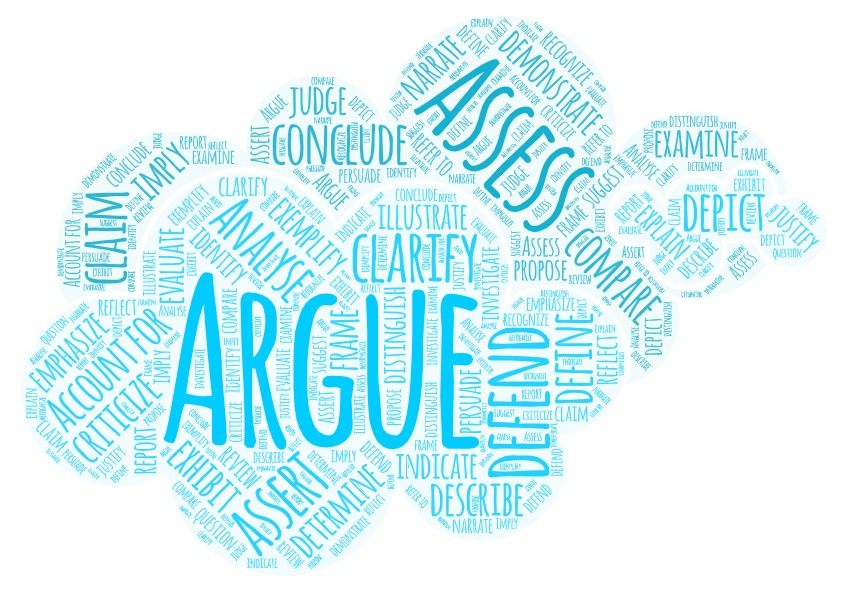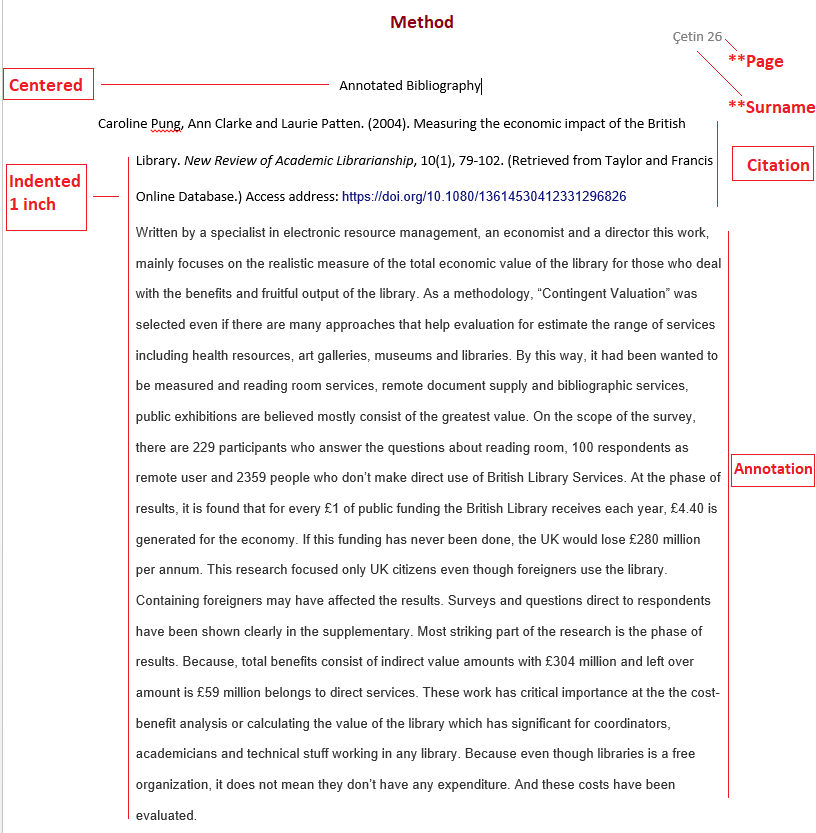What is Annotated Bibliography and how it differs from a bibliography?
Known as “references” or “works cited” bibliographies generally include the list of books, book chapters, journal articles, and other types of resources consulted throughout the research on the chosen topic. Although a bibliography always contains the author's information, title, publisher, date, etc. It never gives detailed information about resources. In order to provide a perspective on what is being said about the topic, an annotated bibliography may be used. An annotated bibliography consists of two parts; the citation information is given first and a paragraph including a brief summary and/or annotation of the source follows the citation. A paragraph including brief summary and/or annotation contains these essentials;
How an annotated bibliography differs from a summary?
An annotated bibliography is not a summary; it is meant to show whether the work is a primary or secondary OR scholarly or popular source. While summaries represent only the content of the source, annotated bibliographies try to illustrate the relevance of the source. That is, an annotated bibliography is a brief summary and evaluation of the text.
Why Should I Write an Annotated Bibliography ?
To state where your research fit in the literature
- Preparing a professional annotated bibliography is necessary for saying where your topic is useful, what kind of perspectives this research has, how this resource completes the gap in that topic and what you provide to the related field.
To help another researchers
- Bibliographies help us by giving information about the author, date, title, etc., in order to provide bibliographical control but don't give further information such as its topic, focus, scope and conclusion. Therefore, researchers may get challenged. By preparing and/or consulting in annotated bibliographies, researchers may understand the relevance of resources to their topics. In this wise, wasting time will be obstructed and the efficiency of study will be increased.
Backgrounds of the authors
- What are the author's educational backgrounds?
- Have you seen the author’s name in any fields of an authority institution?
- Have you seen the author's work/name in other sources' references?
Scope of the text
- Is the work current?
- Is the work out of date?
Topics outline
- What exactly is the work about?
- Do you recommend it?
Intended audience
- Who does the work appeal to?
- Is it public or more likely to be academic?
Research methods
- If work is academic, have the right academic research methods been chosen?
Discussion of relevance of the text for your research
- Is the work fit your field?
Discussion of usefulness of the text for your research
- Is it useful for your research?
Conclusion of your view or thought the text.
- Do you enjoy while you are reading the text?
- Is it boring for you?
- Does the text get you to enhance?
Evaluative Annotations
Like other types of annotations, evaluative annotations also give a brief description about the author and the work but as opposed to others, the aim is not to describe or summarize the work, it is to make criticism. This critiques may be in various form. However all of them should how convincing the work is, up to dateness of the work, credibility of the creator or publisher. This is not meant to find faults, this may include appreciations as well.
Checklist
- How realistic is the resource (if applicable)?
- Is it up to date?
- How comprehensive is the resource?
- How valid and reliable are the research findings?
- Is a proper method chosen?
- How trustworthy is the author or publisher? (Betty and Cochran, 2021)
Descriptive Annotations
A descriptive annotation is the most bases of the genre of the annotations. It gives us information about basis of the resource.Author, format, genre, nature of material used in resource, sections, primary audience, publisher or sponsor etc. (Betty and Cochran, 2021).
As it is clearly indicated, every annotated bibliography type has its own description. The creator of the work and work format is indicated in many ways.
Checklist
- Who are the authors or creators?
- What is the type of the work (book, article, website, etc.)?
- Is it a popular, scholarly, commercial, professional, or governmental resource?
- Is it peer-reviewed?
- What are the main components of the resource? (Betty and Cochran, 2021)
Combined Annotations
A combined annotation is a mixture of the other annotation, beginning with descriptive sentences, followed by summarizing the main argument and purpose of the work. After that, another annotation genre you wish may be added. This consist of the point you consider important.
Checklist
• Is there anything about the content you would like to praise or condemn? This may be a plagiarism you are aware of or a work published in a predatory journal you identified
• If the book or article is a “fruitless” source, is there a good way to make it useful? (Betty and Cochran, 2021)
Reflective Annotations
A reflective annotation says whether the source is helpful and which context must be used/not used in a spesific field. While a book may appeal to aprecise field, it may not related with other fields. A source may be a reference work for a special topic, but this may be a essential work in the field. It must be known that any source may be “good”, and “informative” or “insufficient” for other fields. A source’s value is contextual, and its ultimate worth is driven by one’s needs.
Checklist
- What is the worth of the work in terms of your paper or your need?
- For informative works, how and where would the examples, explanations, facts, or definitions help your research.
- Does this resource fill a gap? If so, how?
- Is this work irrelevant to your research? (Betty and Cochran, 2021)
Summative Annotations
After giving a few sentences about the creator and the work, key points and arguments of the work are elucidated by your own thoughts, followed by the purpose of the work, and main points.
Checklist
- What is the purpose of the work?
- What is the main thesis or argument?
- For scientific studies, what is the problem, research question, hypothesis?
- For explanatory or informative resources, what is explained?
- Are there any useful facts, definitions, or quotations? (Betty and Cochran, 2021)
Beatty, L., & Cochran, C. (2020). Writing the Annotated Bibliography: A Guide for Students and Researchers. Routledge. https://doi.org/10.4324/9780367853051



